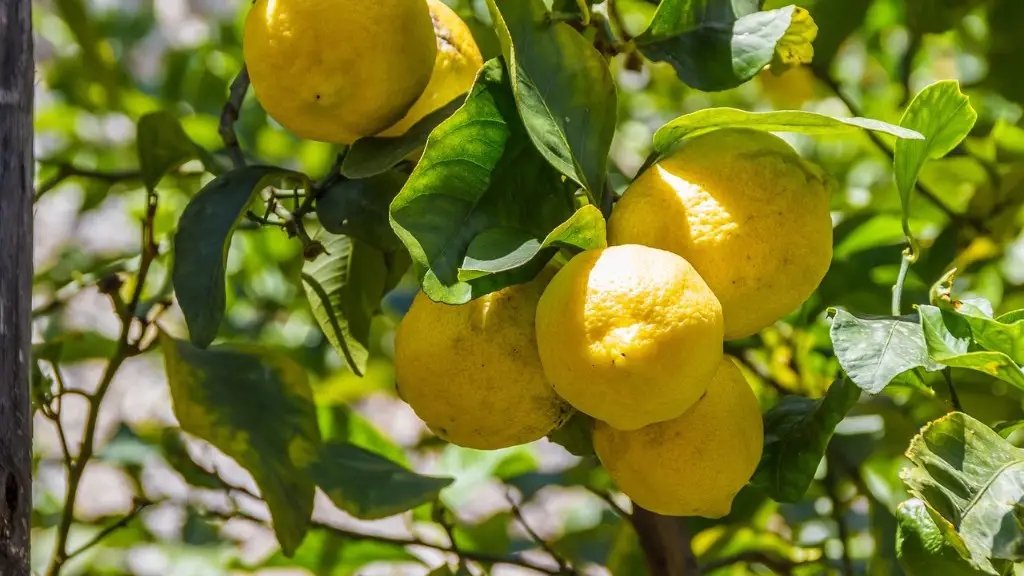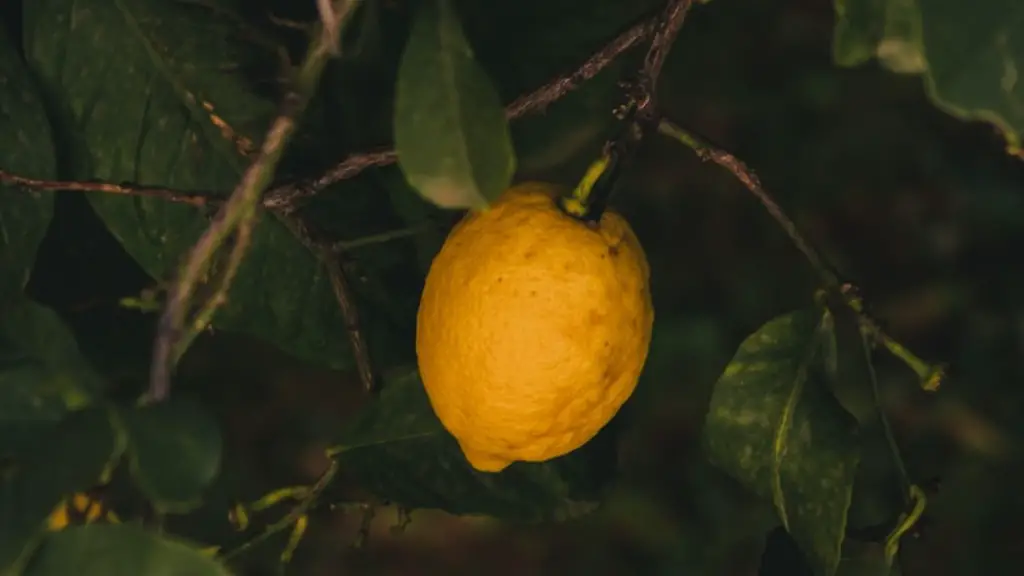Indoor gardening is a rewarding hobby with multiple benefits. One of the most popular plants to bring indoors is a lemon tree. Although lemon trees thrive in outdoor environments, with the right care they can be just as happy in an indoor pot. Below are some tips on how to bring a lemon tree indoors and maintain a healthy, bountiful tree.
First, give the tree plenty of light. Lemon trees require at least 6-8 hours of direct sunlight each day. If natural light is in short supply, you can supplement with artificial light. Installing LED grow lights is a great solution for those with limited natural light.
Second, make sure the soil drains properly. Lemon trees like moist soil, but their root systems can be damaged by over-watering. To pick the perfect soil for your tree, look for a potting mix that is light and well-draining.
Third, fertilize regularly. Lemon trees love fertilizers that are high in nitrogen, potassium, and phosphorous. You can add organic slow-release fertilizers or water-soluble fertilizers once or twice a month.
Fourth, provide a humid environment. Lemon trees need a relative humidity of 40-60%. Since most homes have a much lower humidity level, you may need to use a misting bottle to keep the humidity up. Additionally, you can use a humidifier to keep the air around the tree more humid.
Fifth, protect the tree from pests. Citrus trees are susceptible to scale insects, mealybugs, and mites. To prevent an infestation, examine the tree routinely and remove pests with a damp cloth or special insecticidal soap.
Finally, prune the tree to encourage fruiting. On average, a lemon tree needs to be pruned twice a year. When pruning, remove any weak or dead branches. Also, trim back the top of the tree to maintain its shape.
Watering
When bringing a lemon tree indoors, it is important to pay attention to watering frequency. Lemon trees can become over-watered very easily, and this can damage the roots and create sulfur, or “root rot”. Over-watering can also lead to mold and mildew. To prevent over-watering, wait until the soil is dry before re-watering.
The frequency of watering depends on the size of the pot, the size of the tree, the soil, the temperature and humidity. A good rule of thumb is to water deeply and slowly, once the top inch of soil has dried out.
Rotate
Lemon trees prefer indirect sunlight, so it is important to rotate them. This exposes every part of the tree to the sun, which prevents leaves from becoming leggy. Try to rotate the tree at least once a week, so that it receives sunlight from different angles.
The amount of light the tree receives will depend on its location. If the tree is too far from the window, then you may need to move it closer. If the window is too bright, you can use a thin curtain to filter some of the light.
Temperature
Lemon trees prefer warm temperatures and do not tolerate cold temperatures. The ideal temperature for lemon trees is between 65-85°F (18-29°C). If the temperature dips below the minimum, it may cause the tree to become stressed and would be more prone to pests and disease.
If the indoor temperature is too cold, try using a space heater to increase the temperature around the tree. Make sure the heater is away from the tree, so that there is no risk of bark burns.
Re-potting
As the tree matures, you may need to re-pot it. If the tree has become rootbound, then it is time to move it to a larger pot. The best time to re-pot your lemon tree is in late winter. Choose a pot that is a few inches larger than its current pot. When re-potting, use a light potting mix that is high in nitrogen.
When handling the tree, be careful not to break the roots. If any roots have been damaged, trim them off and discard. Make sure to water the tree thoroughly after re-potting, as the soil may dry out more quickly.
Harvesting
Lemon trees can produce fruit for up to 10 months out of the year. The fruits should be harvested when they are a deep yellow color and full size. To harvest the fruit, use a pair of scissors or clippers to cut it from the branch. Be careful not to pull on the fruits, as this can injure the tree or cause the fruits to fall prematurely.
If you see any pests or disease on the fruits, do not consume them. In this case, remove the fruits and discard them.
Pollination
Indoor lemon trees are not efficient at self-pollination. To ensure the tree produces healthy fruits, you may need to pollinate it by hand. Before pollinating, make sure the flowers are open and have a white, powdery pollen on them.
To pollinate the flowers, you can use a paintbrush, cotton swab, or even an old toothbrush. Gently brush the pollen from the flowers onto the stamens, which are usually located in the center. Make sure to pollinate several flowers on each branch, so that more fruits are produced.
Fertilizers
Fertilizers provide essential nutrients to lemon trees, and feed the soil to promote healthy plants. Lemon trees should be fertilized 2-4 times a year, depending on the size and age of the tree. Look for fertilizer that is balanced in nitrogen, phosphorus, and potassium.
Organic fertilizers such as fish emulsion, seaweed, or vermicast are great options for lemon trees. You can also use slow-release pellet or granular fertilizers, which will keep the soil nourished for a longer period of time. Avoid using synthetic fertilizers, as these can have adverse effects on the tree.
Pruning
Pruning should be done regularly to maintain the health of your lemon tree. Pruning helps keep the tree in shape and encourages new growth. Prune away any dead or diseased branches, as well as any branches that are competing with the main stem.
You can also prune away any shoots that are growing at the base of the tree. These shoots are known as “suckers” and should be removed so that the tree’s energy isn’t wasted. Always prune in the early spring, as this is when the tree is actively growing.
Protection from Pests
Lemon trees are susceptible to pests such as scales, mealybugs, and mites. To protect your lemon tree from these pests, examine the tree regularly and remove any pests with a damp cloth or a special insecticidal soap.
Also, make sure to keep the tree in a warm and dry environment, as this can prevent pests and diseases. Finally, provide adequate ventilation to reduce the risk of pests and diseases.



